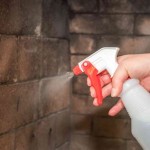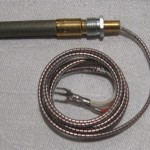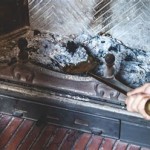Gas Fireplace Safety Screen: A Comprehensive Guide
Gas fireplaces offer a convenient and aesthetically pleasing alternative to traditional wood-burning fireplaces. They provide instant warmth and ambiance without the hassle of chopping wood or cleaning up ashes. However, the heat generated by a gas fireplace, along with the associated risks of gas leaks and component malfunctions, necessitates the implementation of safety measures. A crucial component of gas fireplace safety is the use of a safety screen. This article delves into the importance, types, installation, maintenance, and overall benefits of gas fireplace safety screens.
The Importance of a Gas Fireplace Safety Screen
The primary function of a gas fireplace safety screen is to prevent accidental contact with the hot glass surface. Gas fireplaces can generate significant heat, with the glass reaching temperatures that can cause severe burns in a matter of seconds. Children and pets are particularly vulnerable, as they may not understand the danger or be able to avoid the hot surface. A safety screen creates a physical barrier, significantly reducing the risk of accidental burns. This barrier also helps prevent combustible materials, such as clothing, toys, or decorations, from coming into contact with the heat source, minimizing the risk of fire.
Beyond burn prevention, a safety screen also contributes to overall fireplace safety by containing sparks and embers. While gas fireplaces are generally cleaner than wood-burning fireplaces, occasional sparks or small embers can still escape, particularly if the fireplace is not properly maintained or if there is a malfunction. The screen acts as a barrier to contain these particles, preventing them from igniting nearby flammable materials. This is especially important in homes with carpeting, rugs, or wooden floors near the fireplace.
Furthermore, a safety screen can provide an additional layer of protection in the event of a gas leak or malfunction. While modern gas fireplaces are equipped with safety features to prevent gas leaks, malfunctions can still occur. In the event of a minor leak, the screen can help to contain the gas, allowing more time to evacuate the area and ventilate the space before the gas concentration reaches dangerous levels. While a safety screen is not a substitute for proper gas leak detection and prevention measures, it can provide an extra margin of safety in an emergency.
The absence of a safety screen can lead to increased liability risks for homeowners. If a guest or family member is injured due to contact with the hot glass, the homeowner could be held liable. Installing a safety screen demonstrates a commitment to safety and can help to mitigate potential liability in the event of an accident. Ensuring the screen meets industry standards and is properly installed further strengthens this defense.
Types of Gas Fireplace Safety Screens
Gas fireplace safety screens come in various designs, materials, and configurations to suit different fireplace models and aesthetic preferences. Understanding the different types available is crucial for selecting the appropriate screen for a specific gas fireplace.
One common type is the mesh screen, typically constructed from woven metal wires. Mesh screens offer excellent visibility of the flames while providing a strong barrier against contact with the hot glass. They are relatively inexpensive and easy to install, making them a popular choice for many homeowners. However, mesh screens may not be as aesthetically pleasing as other options, and the fine mesh can sometimes accumulate dust and debris that requires regular cleaning.
Another type is the glass panel screen, which consists of a transparent panel made of tempered glass or ceramic. Glass panel screens offer a sleek and modern look while still providing a clear view of the flames. They are also highly effective at preventing contact with the hot glass and containing sparks. However, glass panel screens are typically more expensive than mesh screens and may require professional installation. Also, the glass panel itself can become hot, although it will generally be less likely to cause burns than the direct glass of the fireplace itself.
Bifold or tri-fold screens are hinged screens that can be folded and positioned to provide access to the fireplace. These screens offer the convenience of easy access for cleaning or adjusting the gas logs while still providing a barrier when closed. They are available in various styles and materials, including mesh, glass, and metal, and can be customized to fit different fireplace openings. However, bifold and tri-fold screens may be more complex to install and maintain than simpler screen designs.
Decorative screens are designed to enhance the aesthetic appeal of the fireplace while also providing safety. These screens often feature intricate designs, patterns, or embellishments that complement the surrounding décor. They are available in a wide range of styles, from traditional to contemporary, and can be customized to match specific preferences. However, decorative screens may be more expensive than standard safety screens and may not provide the same level of visibility of the flames.
Universal fit screens are designed to fit a wide range of gas fireplace models. These screens typically feature adjustable mounting brackets that allow them to be securely attached to the fireplace surround. They are a convenient option for homeowners who are unsure of the exact dimensions of their fireplace or who want a screen that can be easily transferred to another fireplace if needed. However, universal fit screens may not provide the same precise fit as custom-made screens, and may require some adjustments during installation.
Installation and Maintenance of Gas Fireplace Safety Screens
Proper installation and regular maintenance are crucial for ensuring the effectiveness and longevity of a gas fireplace safety screen. Incorrect installation can compromise the screen's ability to protect against burns and fires, while neglecting maintenance can lead to damage or deterioration that reduces its effectiveness.
Before installing a safety screen, it is essential to carefully measure the fireplace opening to ensure a proper fit. The screen should completely cover the opening and be securely attached to the fireplace surround to prevent it from being accidentally dislodged. Following the manufacturer's instructions is crucial for proper installation. The specific installation process will vary depending on the type of screen and the design of the fireplace.
For mesh screens, it is important to periodically inspect the mesh for any signs of damage, such as tears or holes. Damaged mesh should be repaired or replaced immediately to maintain the screen's protective function. Regular cleaning is also necessary to remove dust and debris that can accumulate on the mesh. A soft brush or vacuum cleaner can be used to clean the screen without damaging the mesh.
Glass panel screens should be cleaned regularly with a glass cleaner to maintain their transparency and prevent the buildup of soot or dirt. Avoid using abrasive cleaners or materials that can scratch the glass. Also, inspect the glass panel for any cracks or chips. Damaged glass should be replaced immediately to prevent the risk of shattering or injury.
Hinged screens should be inspected periodically to ensure that the hinges are functioning properly and that the screen is securely attached to the fireplace. Lubricate the hinges as needed to prevent them from sticking or squeaking. Also, check the latches or clasps that hold the screen closed to ensure that they are properly engaging and preventing the screen from opening accidentally.
Regardless of the type of safety screen, it is important to store it properly when it is not in use. Store the screen in a dry, protected area to prevent damage from moisture or extreme temperatures. Avoid stacking heavy objects on top of the screen, as this can cause it to bend or warp. Proper storage will help to prolong the life of the screen and ensure that it is ready for use when needed.
Benefits of Using a Gas Fireplace Safety Screen
The benefits of using a gas fireplace safety screen extend beyond simply preventing burns and fires. A well-chosen and properly maintained screen can also enhance the overall safety, efficiency, and aesthetic appeal of a gas fireplace.
As previously mentioned, the primary benefit of a safety screen is burn prevention. By creating a physical barrier between the hot glass and occupants, the screen significantly reduces the risk of accidental burns, particularly for children and pets. This provides peace of mind for homeowners and ensures a safer environment for everyone in the home.
Another significant benefit is fire prevention. By containing sparks and embers, the screen prevents them from igniting nearby flammable materials, such as carpets, rugs, or furniture. This is especially important in homes with young children or pets who may be more likely to play near the fireplace or come into contact with sparks. The screen also provides an extra layer of protection in the event of a gas leak or malfunction.
A safety screen can also improve the energy efficiency of a gas fireplace. By reducing drafts and heat loss, the screen helps to maintain a more consistent temperature in the room, reducing the need to run the fireplace as often. This can lead to lower energy bills and reduced environmental impact. Some safety screens are designed with features that further enhance energy efficiency, such as insulated panels or adjustable vents.
In addition to its safety and efficiency benefits, a safety screen can also enhance the aesthetic appeal of a gas fireplace. By providing a decorative frame for the flames, the screen can add a touch of elegance and sophistication to the room. Safety screens are available in a wide range of styles, materials, and finishes to complement different décor styles and personal preferences. A well-chosen screen can transform a gas fireplace from a functional appliance into a focal point of the room.
Using a gas fireplace safety screen demonstrates a commitment to safety and responsible homeownership. It shows that the homeowner is taking proactive steps to protect their family and guests from harm. This can provide peace of mind and improve the overall quality of life for everyone in the home. It also reduces the risk of liability in the event of an accident, protecting the homeowner from potential legal repercussions.

Barrier Screens Mean Safety As Fireplace Interest Heats Up Builder

Secured Fireplace Safety Screen Babysecure Inc

Fireplace Safety Screen Toronto Zoroast The

Best Fireplace Screens Top 6 Reviews Comparisons

Hot Glass Safety Screen Pilgrim Home Hearth

Gas Heater And Fireplace Safety Babyproof Co Za

Gas Fireplace Safety Screen Impressive Climate Control

Chesneys Usa Are Fireplace Screens Necessary

How To Childproof Your Fireplace Baby Proof

Napoleon B42 Safety Screen Barrier Assembly W010 3173 Ser
Related Posts








